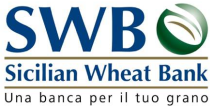
ABOUT THE PROJECT
POC4COMMERCE: Practical ONTOCHAIN for Commerce
POC4COMMERCE addresses the challenge of developing a consistent, unambiguous, and shared model supporting the semantic interoperability of the ONTOCHAIN heterogeneous stakeholders, ranging from the blockchain ledgers to the relevant software agents and people. The project is carried out upon five main objectives. The first objective consists in providing a high quality survey concerning the ontological representation of ONTOCHAIN stakeholders including Ethereum smart contracts and off-chain services. A full research and innovation project proposal follows the survey by the second month. Then, by the end of the fourth month, the project shall complete three other objectives, one for each TRL-4 ontology to be deployed for the ontological core of POC4COMMERCE. The first foundational ontology, named OC-FOUND, covers all relevant stakeholders of ONTOCHAIN such as participants, applications, and services provided. The second foundational ontology, OC-Ethereum, fully covers the Ethereum blockchain including smart contracts. The third domain-specific ontology, called OC-COmmerce, represents commercial agents and activities, goods, products, offerings, and services related with business and commerce. Consistency of the ontology is verified by the most popular OWL reasoners. Real-world data provided by the SME partner Sicilian Wheat Bank and by the iExec Marketplace is used to validate the ontologies together with SPARQL queries built upon ad-hoc competency questions.
The last objective to be completed by the sixth month is the design of the commercial software agent “OC-Commerce Search Engine” (“OC-CSE” in short) exploiting the ontological core to implement a search engine for goods and services over the ONTOCHAIN ecosystem. The engine will be evaluated through UML activity diagrams describing OC-CSE at TRL-2 and the provided dataset. The seventh month of the project will be dedicated to submit a research paper to a highly ranked journal.
http://poc4commerce-project.dmi.unict.it/


Motivation for the project:
The concept of a new Era of the Internet where knowledge, products, and services are exchanged in a resilient and sustainable way, especially in the modern digital economy, requires a family of foundational and domain-specific ontologies embracing all its constituent elements, from agent to people.
Generic use case description:
Providers make available products and services in the Ethereum blockchain through a data publisher that annotates transactions by exploiting the provided ontological stack. Users search for products and services through the OC-CSE search engine.
Essential functionalities:
POC4COMMERCE provides a semantic representation of ONTOCHAIN stakeholders, including the Ethereum blockchain and commercial activities carried out in the ecosystem, exploited to implement an agent that profitably finds goods, products, information, and services meeting user requirements.
How these functionalities can be integrated within the software ecosystem:
POC4COMMERCE provides a family of ontologies describing the constitutional elements of the ONTOCHAIN ecosystem, in particular of agents and their functionalities described through their behaviours. Stakeholders are programmatically mapped on such representation to communicate and exchange knowledge.
Gap being addressed:
POC4COMMERCE lays the grounds for the semantic interoperability of potentially innumerable domain-specific ontologies for the ONTOCHAIN ecosystem, in particular in the ambits of digital commerce and finance, where the provided semantic search engine illustrates the effectiveness of the approach.
Expected benefits achieved with the novel technology building blocks:
POC4COMMERCE contributes, on one hand, to set the basis for a truly interoperable ONTOCHAIN ecosystem where services are defined at a high-level by fully specifying their functionality, from the other hand to define a novel economic model where individuals and companies are tightly interconnected.
Potential demonstration scenario:
POC4CMMERCE applies to commercial and financial scenarios by describing an ONTOCHAIN digital marketplace where the wide array of commercial participants share products and services, and final users have access to common and tools to profitably find resources compliant with their specifications.
PROJECT OUTCOMES
Providers publish offerings about products and services through the ontological stack constituted by three ontologies, OC-Found, OC-Commerce, OC-Ethereum. Customers can find available assets thanks to the semantic search engine.
Demo:
Repositories:
https://github.com/dfsantamaria/POC4COMMERCE.git
Documentation:
https://github.com/dfsantamaria/POC4COMMERCE/blob/main/documentation/ONTOCHAIN_D3.pdf (ontological stack) https://github.com/dfsantamaria/POC4COMMERCE/blob/main/documentation/ONTOCHAIN_D4.pdf (iExec example)
More details:
Customer engagement
The semantic search engine provides RDF corresponding to the desired search. The fragment is used to guide the customer to the final purchase. When a purchase is completed the knowledge base is updated accordingly.
Monetization
There are at least toW possible models. Either users pay a fee when a purchase is completed, or providers pay a fee when publishing an offering.
Scenario
Scenario 1 - How it works for providers
Providers publish a representation of the agent corresponding to the services and a representation of the smart contract managing the Ethereum token corresponding the asset to be sold.
Providers provide a semantic representation of the offering concerning the asset to be sold.
When a purchase is completed, the offering is updated and the corresponding Ethereum token is minted, transferred, or destroyed accordingly.
Scenario 2 - How it works for customers
Customers use the semantic search engine to find the desired product or service.
When a purchase is completed, the knowledge base is updated accordingly.
Semantic content and content transfer
The ontology stack provides a full semantic representation of agents involved in the commercial transaction such as providers, customers, Ethereum smart contracts, tokens and assets.
Ownership
The knowledge base is owned either by the ONTOCHAIN consortium or by users that share it through the network.
Existing similar solutions/services
A similar approach combines the ontology GoodRelations with BLONDiE together with an ontology for agents and services such as OWL-S. Notice that there is not an ontology for representing tokens and related assets. Moreover, ontologies such as OWL-S are not as powerful as the ontological stack to describe smart contracts, services and ONTOCHAIN stakeholders in general.
TESTIMONIAL
The ONTOCHAIN adventure has been thrilling and invigorating. We were lucky since the beginning to find a call for project proposals that was the perfect cut for the very research lines some of us had long wanted to pursue. Good luck continued through the formation of a lean yet fit consortium to effectively pursue that research. But the best luck was the engagement in a profitable and thought-provoking mentoring process. The mentors offered continuous live review of our ideas and developments, while bolstering the business potential in a way we would have been unable ourselves, ultimately navigating us to success.
TEAM

Domenico Cantone
Domenico Cantone is Full Professor of Computer Science at University of Catania.

Cristiano Longo
Cristiano Longo is Senior Software Developer at Sicilian Wheat Bank.

Marianna Nicolosi-Asmundo
Marianna Nicolosi-Asmundo is Assistant professor at University of Catania.

Daniele Francesco Santamaria
Daniele Francesco Santamaria is Post-Doc Researcher and Adjunct Professor at University of Catania.
ENTITIES

University of Catania is the oldest University in Sicily offering graduate and post-graduate education in a variety of disciplines.

The Sicilian Wheat Bank S.p.A is a blockchain-enabled marketplace for Sicilian wheat.


 This project has received funding from the European Union’s Horizon 2020 research and innovation programme under grant agreement No 957338
This project has received funding from the European Union’s Horizon 2020 research and innovation programme under grant agreement No 957338




